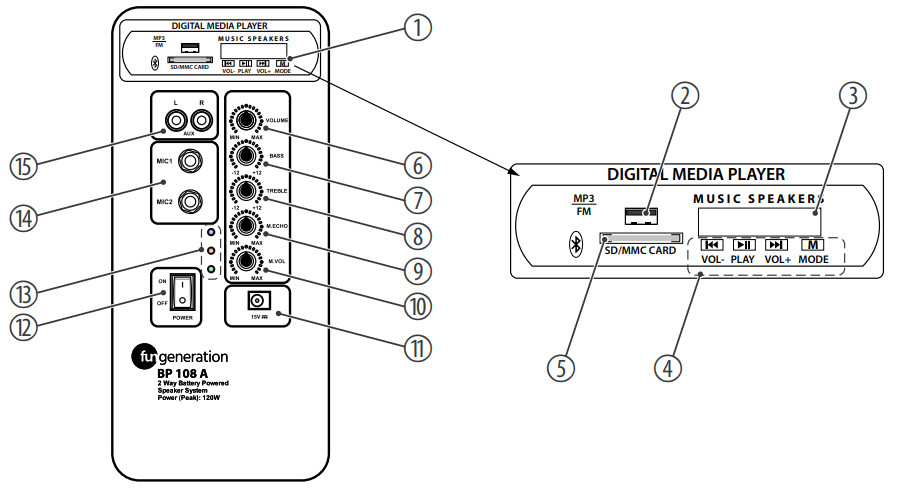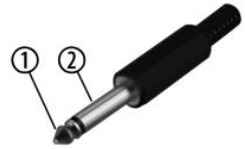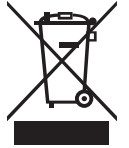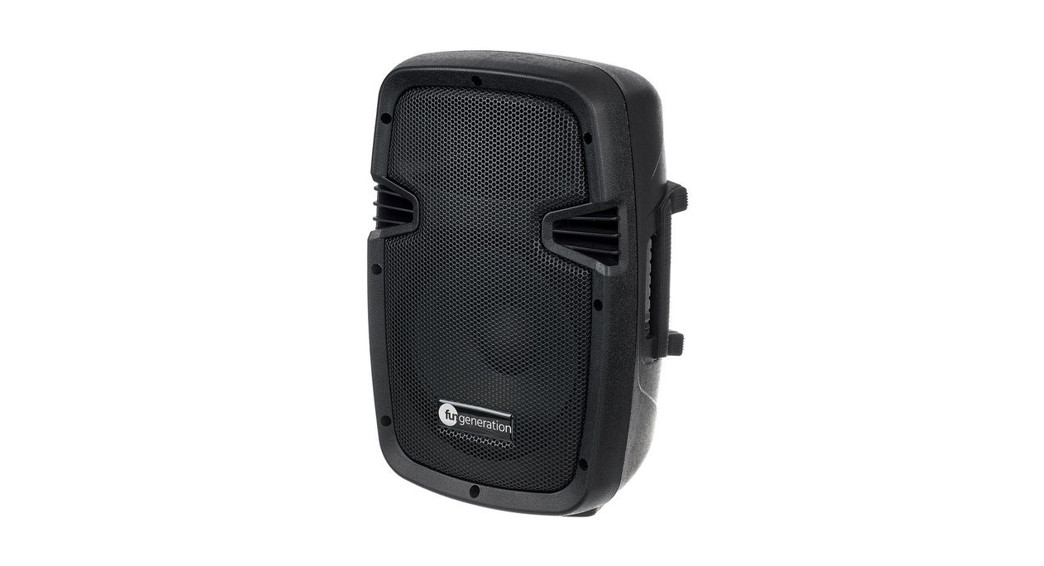
 BP 108 Aactive 2-way speakeruser manual
BP 108 Aactive 2-way speakeruser manual

General information
his user manual contains important information on the safe operation of the device. Read and follow all safety notes and all instructions. Save this manual for future reference. Make sure that it is available to all persons using this device. If you sell the device to another user, be sure that they also receive this manual.Our products and user manuals are subject to a process of continuous development. We, therefore, reserve the right to make changes without notice. Please refer to the latest version of the user manual which is ready for download under www.thomann.de.
Further information
On our website (www.thomann.de) you will find lots of further information and details on the following points:
| Download | This manual is also available as a PDF file for you to download. |
| Keyword search | Use the search function in the electronic version to find the topics ofinterest for you quickly |
| Online guides | Our online guides provide detailed information on technical basicsand terms. |
| Personal consultation | For a personal consultation please contact our technical hotline. |
| Service | If you have any problems with the device the customer service willgladly assist you. |
Notational conventions
This manual uses the following notational conventions:
| Letterings | The letterings for connectors and controls are marked by square brackets and italics.Examples: [VOLUME] control, [Mono] button. |
| Displays | Texts and values displayed on the device are marked by quotation marks and italics.Examples: ‘24ch’ , ‘OFF’ . |
Symbols and signal words
In this section, you will find an overview of the meaning of symbols and signal words that are used in this manual.
| Signal word | Meaning |
| DANGER! | This combination of symbols and signal words indicates animmediately dangerous situation that will result in death orserious injury if it is not avoided. |
| WARNING! | This combination of symbol and signal word indicates a pos‐a possible dangerous situation that can result in death or seriousinjury if it is not avoided. |
| CAUTION! | This combination of symbol and signal word indicates a pos‐a possible dangerous situation that can result in minor injury if itis not avoided. |
| NOTICE! | This combination of symbol and signal word indicates a pos‐a possible dangerous situation that can result in material andenvironmental damage if it is not avoided. |
| Warning signs | Type of danger |
 |
Warning – high-voltage. |
| Warning signs | Type of danger |
 |
Warning – danger zone. |
Safety instructions
Intended useThis device is designed for sound reinforcement. Use the device only as described in this user manual. Any other use or use under other operating conditions is considered to be improper and may result in personal injury or property damage. No liability will be assumed for damages resulting from improper use.This device may be used only by persons with sufficient physical, sensorial, and intellectual abilities and having corresponding knowledge and experience. Other persons may use this device only if they are supervised or instructed by a person who is responsible for their safety.





![]()
![]()
![]()
![]()
![]()
![]()












![]()
![]()
![]()
![]()
![]()
![]()
![]()
![]()
![]()
![]()
![]()
![]()
![]()
![]()
![]()
![]()
![]()
![]()
![]()
![]()
![]()
![]()
![]()
![]()
![]()
![]()
![]()
![]()
![]()
![]()
![]()
![]()
![]()
![]()
![]()
![]()
![]()
![]()
![]()
![]()
![]()
![]()
![]()
![]()
![]()
![]()
![]()
![]()
![]()
![]()
![]()
![]()
![]()
![]()
Features
The mobile PA system is characterized by the following features:
- 2-way active speaker box for PA and DJ application
- Maximum output power: 60 W
- 8″ woofer
- 1″ compression driver
- 2-band equalizer
- Built-in media player with display, SD/MMC card slot, USB port and Bluetooth receiver
- 2 × MIC input (1/4″ phone socket, unbalanced)
- 1 × RCA socket pair
- Solid plastic housing with pole mount and handles
- Includes power adapter
Starting up
Unpack and check carefully there is no transportation damage before using the unit. Keep the equipment packaging. To fully protect the product against vibration, dust and moisture during transportation or storage use the original packaging or your own packaging material suitable for transport or storage, respectively.Create all connections while the device is off. Use the shortest possible high-quality cables for all connections. Take care when running the cables to prevent tripping hazards.
![]()
![]()
![]()
![]()
![]()
![]()
![]()
![]()
![]()
![]()
![]()
![]()
![]()
![]()
![]()
![]()
![]()
![]()
Dealing with lithium batteries






When handled correctly and appropriately lithium batteries pose no risk.Store lithium batteries in a cool, dry place, ideally in the original packaging.Store lithium batteries away from heat sources (e.g. radiators or sunlight). Lithium batteries are hermetically sealed. Never attempt to open a lithium battery.If the battery housing is damaged small amounts of the electrolyte may leak out. If this should happen, seal the lithium battery in airtight packaging and wipe up the traces of electrolyte using absorbent paper towels. You must wear protective rubber gloves when doing so. Clean your hands and the affected surface thoroughly with cold water.Never attempt to recharge non-rechargeable lithium batteries. When charging lithium batteries you must use a suitable charging device intended for the purpose.Before disposing of the device remove the lithium batteries. Protect used lithium batteries against potential short circuits, e.g. by covering the poles with adhesive tape.Only use powder extinguishers or other suitable extinguishing agents to extinguish a burning lithium battery.
Connections and controls


| 1 | Media player |
| 2 | USB port |
| 3 | Display |
| 4 | Selection and control buttons of the built-in media player: |
  Hold down the button to decrease the volume.If you press the button briefly, it has a different function depending on the mode:USB / SD / Bluetooth: Skip back, Line: no function |
|
  |
| [M]
Button for selecting the mode (USB / SD / Bluetooth, line input). |
|
| 5 | SD / MMC card slot |
| 6 | VOLUME]
Use this control to adjust the volume of your microphone, instrument, or another audio source. |
| 7 | BASS]Use this control to adjust the low frequencies of your microphone, instrument, or another audio source. |
| 8 | [TREBLE]Use this control to adjust the high frequencies of your microphone, instrument, or another audio source. |
| 9 | [M.ECHO]
Use this control to adjust the echo effect of your microphone or instrument. |
| 10 | [M.VOL]Use this control to adjust the volume of your microphone or instrument. |
| 11 | Connection socket for a power supply 15 V DC 1 A |
| 12 | Main switch to turn the device on and off. |
| 13 | LEDs |
| Blue: Lights up when the device is turned on | |
| Red: Lights up when the device is connected to the mains or being charged | |
| Green: Lights when the battery is fully charged | |
| 14 | 1/4″ phone socket to connect the microphone or instrument. |
| 15 | RCA input sockets for connecting an external audio device. |
Playback via Bluetooth
You can play music wirelessly from mobile Bluetooth devices such as smartphones, tablets, or laptops via the built-in Bluetooth receiver of the device. Observe the user’s guide of your Blue‐ tooth device. Place the Bluetooth device near the box and turn it on.Press [MODE] repeatedly until the display shows ‘BT’. After a few seconds, your Bluetooth device will be detected (name ‘BP-108A’ ) and the display shows ‘BT’ permanently.You can then play the music files stored on the Bluetooth device. Use the buttons of the built-in player for control.
Technical specifications
| Inputs | 1 × RCA socket pair, stereo
2 × 1/4″ phone socket, unbalanced |
|
| Speaker | Two-way system with 1″ compression driver and 8″ woofer | |
| Max. sound pressure level | 109 dB | |
| Frequency range | 75 Hz … 18 kHz | |
| Storage media | SD card, USB devices | |
| Playback formats | MP3, WAV | |
| Bluetooth® | Frequency of operation | 2.402 GHz … 2.480 GHz |
| Max. transmission power | +2 dBm | |
| Standard | Version 5.0 | |
| Name | BP-108A | |
| Output power | RMS: 15 W
Peak: 60 W |
|
| Supply voltage | External power adapter, 100 – 240 V 50/60 Hz | |
| Operating voltage | 15 V / 1000 mA, center positive | |
| Mounting option | Standing or on a tripod | |
| Dimensions (W × H × D) | 245 mm × 390 mm × 195 mm | |
| Weight | 4.6 kg | |
| Ambient conditions | Temperature range | –5 °C…45 °C |
| relative humidity | 20 %…80 % (non condensing) |
Further information
| Multifunctional housing | Yes |
| Tripod flange | Yes |
| Truss-capable | No |
| Outdoor capable | No |
Plug and connection assignment
Introduction
This chapter will help you select the right cables and plugs to connect your valuable equipment in such a way that a perfect sound experience is ensured.Please note these devices, because especially in ‘Sound & Light’ caution is indicated: Even if a plug fits into the socket, an incorrect connection may result in a destroyed power amp, a short circuit or ‘just’ in poor transmission quality!
Balanced and unbalanced trans-mission
Unbalanced transmission is mainly used in semi-professional environments and in hifi use.Instrument cables with two conductors (one core plus shielding) are typical representatives of the unbalanced transmission. One conductor is ground and hielding while the signal is transmitted through the core.Unbalanced transmission is susceptible to electromagnetic interference, especially at low levels, such as microphone signals and when using long cables.In a professional environment, therefore, balanced transmission is preferred, because this enables an undisturbed transmission of signals over long distances. In addition to the conductors ‘Ground’ and ‘Signal’, in a balanced transmission, a second core is added. This also transfers the signal but is phase-shifted by 180°.Since the interference affects both cores equally, by subtracting the phase-shifted signals, the interfering signal is completely neutralized. The result is a pure signal without any noise inter‐ ference.
Plug and connection assignment
1/4″ TS phone plug (mono, unbalanced)


| 1 | Signal |
| 2 | Ground, shielding |
RCA connection


Drawing and table indicate the pin assignment of an RCA plug.
| 1 | Signal |
| 2 | Ground, shielding |
Cleaning
Device components
Clean the device components that are accessible from the outside regularly. The cleaning frequency depends on the operating environment: damp, smoky or particularly dirty environments can cause a greater accumulation of dirt on the device components.
- Clean with a dry soft cloth.
- Stubborn dirt can be removed with a slightly dampened cloth.
- Never use solvents or alcohol for cleaning.
Protecting the environment
Disposal of the packaging material


For the packaging, environmentally friendly materials have been chosen that can be supplied to normal recycling.Ensure that plastic bags, packaging, etc. are properly disposed of.Do not just dispose of these materials with your normal household waste, but make sure that they are collected for recycling. Please follow the notes and markings on the packaging.
Disposal of batteries


Batteries do contain some hazardous chemicals so they should not be thrown away with normal household waste. They should be returned to the manufacturer for disposal or recycled elsewhere in accordance with your local regulations.Dispose of lithium batteries only in discharged condition. Remove lithium batteries from the device before disposal. Protect used lithium batteries against potential short circuits, e.g. by covering the poles with adhesive tape. Dispose of the built-in lithium batteries together with the device. Please check for an appropriate reception facility.
Disposal of your old device


This product is subject to the European Waste Electrical and Electronic Equipment Directive (WEEE) in its currently valid version. Do not dispose with your normal household waste.Dispose of this device through an approved waste disposal firm or through your local waste facility. When discarding the device, comply with the rules and regulations that apply in your country. If in doubt, consult your local waste disposal facility.
Musikhaus Thomann · Hans-Thomann-Straße 1 · 96138 Burgebrach · Germany · www.thomann.de
Musikhaus ThomannThomann GmbHHans-Thomann-Straße 196138 BurgebrachGermanyTelephone: +49 (0) 9546 9223-0E-mail: [email protected]Internet: www.thomann.de05.07.2021, ID: 471746 (V2)
References
[xyz-ips snippet=”download-snippet”]

